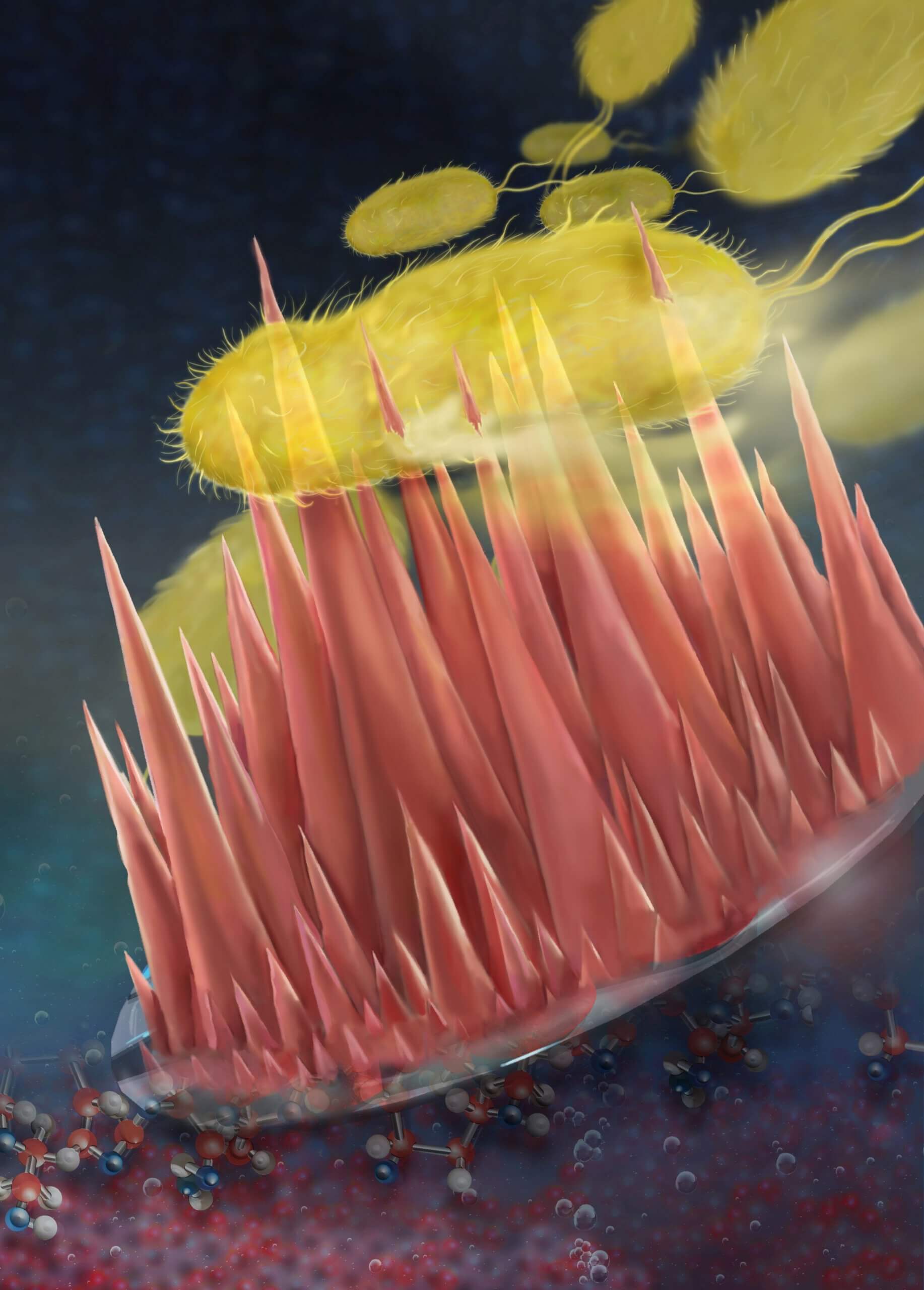Long and dense spikes formed by a sulfated polysaccharide substance found in red algae were discovered by a research group from Ben-Gurion University of the Negev to have biological activity against bacteria and fungi

Long and dense spikes formed in a sulfated polysaccharide substance found in red algae were discovered by a research group from Ben-Gurion University in the Negev to have biological activity against bacteria and fungi. The research findings were published in the journal marine drugs.
Bacterial resistance to antibiotics is a significant medical problem in response to various diseases and in recent years efforts have been made to find alternatives for them. As part of these efforts, a research group from Ben-Gurion University of the Negev dealing with polysaccharides (polysaccharides) from algae, discovered that the chemical structure of the polysaccharide with the copper ions caused the creation of a "spike"-like structure and those with antibacterial and antifungal activity.
The doctoral student Nofer Yehuda from the Department of Biotechnology Engineering at Ben-Gurion University of the Negev under the guidance of Prof. Shush Arad and Prof. Ariel Kushmaro found that the structure of the polysaccharide (polysaccharide extracted from red algae) with copper works effectively against bacteria and fungi (Candida albicans) and has a unique structure. "The mechanism of action is related to the fact that long and dense nano 'spikes' are formed on the surface, causing damage to the membrane of the bacteria and fungi, thus killing them."
The combination of copper with the polysaccharide arouses great interest recently due to findings that indicated several biological activities leading to the development of new uses in the field of cosmetics and medicine. In the current study, long (1000 nm) and sharp (20 nm) nano "spikes" were demonstrated in high density (2000-5000 spikes on an area of 2 micrometers) that have activity against bacteria and fungi and also prevented the formation of a biofilm (cell adhesion to each other on a surface). The reason for this, apparently, is due to the perforation of the cell membrane by the spikes, which results in the leakage of the intracellular substance and thus results in the killing of the microorganisms.
This discovery will allow external treatment against skin fungi, wounds or burns in the form of a dressing and ointment (gel). The thorns are active against resistant bacteria such as Acinobacter, Pseudomonas and against resistant fungi such as Candida albicans and are therefore a substitute for antibiotics.
"The newly created substance has activity against bacteria and fungi which is a combination of copper with a polysaccharide from marine red algae," he explained Prof. Ariel Kushmaro from the Department of Biotechnology Engineering at Ben-Gurion University of the Negev. "The findings have been submitted as a patent and further commercialization of the new compounds for applications in medicine is expected."
"In light of the increase in antibiotic resistance, there is a growing need to develop new treatments." noted Dr. Galit Mazuz-Perlmutter, Vice President of the Business Development Department at BGN Technologies, the commercialization company of Ben-Gurion University of the Negev. "We see importance in promoting research into implementation in order to allow this type of development to reach the market for the benefit of patients."
The research was conducted by: Doctoral student Nofer Yehuda, Prof. Shush Arad, Prof. Ariel Kushmaro and Prof. Levy Geber from the Department of Biotechnology Engineering, at Ben-Gurion University of the Negev.
More of the topic in Hayadan:

One response
This is about "Candida albicans" which is a vaginal fungus.
There is a very serious problem in hospitals around the world from the resistant "Candida auris" fungus. The question is, are these spikes effective against her?